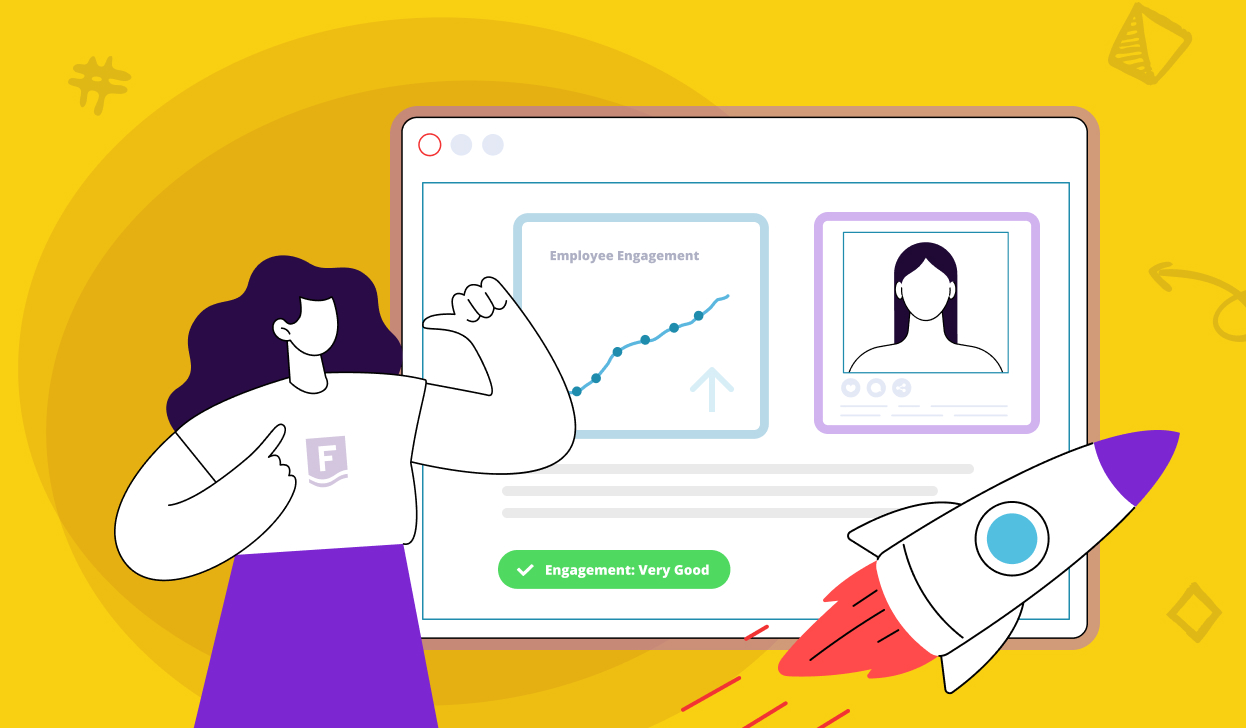What is Employee Experience & Why Does It Matter?


Because work comprises nearly a third of our lives, many organizations are on a mission to make work more enjoyable and engaging by investing in the employee experience (EX).
Similar to the concept of customer experience (CX), employee experience refers to interactions and experiences an employee has with their employer, work environment, and colleagues from their unique perspective.
There’s not a one-size-fits-all solution to EX. Some factors that influence employee experience and impact engagement include team interactions, relationships with managers, learning and development opportunities, and resources and technology that help them do their jobs.
While benefits packages can also factor into EX, they are not one in the same. EX goes beyond tangible benefits and perks and answers the question: “How can we give our people a reason to be excited about going to work?”
Why is EX important?
Organizations are investing in employee experience to improve the relationship between employees and their workplaces. By driving EX, employers are improving employee recruiting, employee engagement, and employee retention efforts.
This is because EX has a holistic impact on both the employee and employer. A strong employee experiences drives:
- Employee happiness & healthiness
- Productivity & growth
- Employer brand
- Customer satisfaction
Employee Experience and Employee Happiness & Wellness
Mental health is a top priority for employees everywhere. From diagnoses to personal and global stressors, mental health solutions have become less of a want and more of a need. 46% of people planning to quit are quitting because of stress. Life is stressful enough without having to worry about performance at work. That’s why employees at companies with a great employee experience are less likely to suffer from work-related stress and burnout and stay loyal to their employers.
Employee Experience and Growth & Productivity
Employee experience is crucial for a company’s success. Research by Deloitte shows that companies with high employee engagement and satisfaction outperform their competitors by 147% in earnings per share. Not only that, companies with a higher number of engaged employees see a 41% reduction in absenteeism and a 17% increase in productivity.
Employee Experience and Employer Brand
A positive employee experience is foundational in creating an employer brand that signals who you are to current and prospective employees. According to SHRM, a strong employer brand “communicates that the organization is a good employer and a great place to work.”
This is why companies are more likely to attract and retain top talent when they create an experience that allows employees to feel connected to their work and valued beyond their job descriptions.
In fact, companies that prioritize company culture and EX have 59% lower turnover rate.
Employee and Customer Satisfaction
Prioritizing culture affects your people — including both employees and customers. Creating a strong employee experience not only provides the space for more collaboration and innovation, engaged employees are more likely to provide excellent customer service. Gallup confirmed that engaged businesses earn a 10% increase in customer ratings and a 20% increase in sales.
Benefits of a strong EX
A strong employee experience has benefits that extend far beyond the individual employee. When employees feel supported, valued, and engaged, they are more likely to be productive, motivated, and committed to their work.
This sense of fulfillment can impact an organization’s bottom line. Engaged employees are more likely to provide excellent customer service, leading to increased customer loyalty and revenue. Companies that excel in customer experience have a 1.5 times higher employee engagement rate than companies with poor customer experience.
A positive EX can also lead to decreased turnover rates and reduced costs associated with recruitment and training. Engaged employees are more likely to stay with a company, which can save organizations significant time and resources in the long run.
Additionally, a strong employee experience can enhance the overall culture and reputation of the organization. This helps attract top talent and improves brand perception among customers and stakeholders.
Ultimately, investing in employee experience can have a significant impact on organizational success.
See how Fringe can help boost your EX
Employee Experience vs Employee Engagement
While employee engagement and employee experience are related, they play unique roles within a company’s culture. Employee engagement refers to the emotional connection employees have with their work. Employee experience, on the other hand, is the umbrella term for all of the interactions and experiences during the employee lifecycle, which includes engagement in their work.
Ways to Measure EX Success During the Employee Lifecycle
To measure employee experience success, it’s important to consider the various stages of the employee lifecycle: recruitment, onboarding, development, retention, and offboarding. The key is to create an open channel of communication.
Employee Experience and Recruitment
Organizations can use metrics such as time-to-hire, candidate satisfaction surveys, and the number of qualified candidates per opening to measure the success of the recruitment process.
Employee Experience and Onboarding
Feedback surveys can help measure the effectiveness of the onboarding program and identify areas for improvement.
Employee Experience and Development
Organizations can measure employee engagement levels, track the completion of training and development programs, and gather feedback on performance reviews.
Employee experience and Retention
Metrics such as employee satisfaction surveys, turnover rates, and exit interviews can provide insights into the overall employee experience.
Employee Experience and Offboarding
Organizations can measure the effectiveness of the offboarding process through exit surveys and feedback from departing employees.
Gathering feedback from employees through surveys, focus groups, and one-on-one conversations at each stage of the employee lifecycle is a key way to measure the success of the employee experience and make data-driven decisions to improve it.
How to Create a Better EX
When it comes to employee experience initiatives, employee wellbeing is key. Yet traditional approaches no longer work.
In the past, organizations would invest in employee experience by addressing one employee need with one program at a time — a mental health program this year, a fertility benefit the next — resulting in low utilization rates because no program addressed every employee need.
Today, organizations are moving away from this top-down approach in favor of lifestyle benefit platforms like Fringe that are designed with employee choice and flexibility in mind.
Since 96% of employees want personalized benefits that reflect their needs, leveraging the power of employee choice is the most effective way of creating an effective EX for everyone.
Here’s how to create a better EX with lifestyle benefits:
1. Partner with a lifestyle benefits platform to give employees access to wellbeing solutions
A positive employee experience means different things to different people. For some employees, it will look like access to mental health services. For others, it’s a trip to the gym, a massage, or simply having dinner delivered on a busy weeknight. By rolling all of these options into one platform, employers can leverage the power of curation and choice to impact EX.
2. Determine how to fund employee accounts.
Most organizations start with a monthly or quarterly stipend and then add in additional funding later on. For example, they may start with a $50/mo stipend, then give managers access to additional funds that they can distribute for rewards & recognition programs, or separate funds to celebrate employee birthdays and work anniversaries.
Learn how much to budget for lifestyle benefits based on industry benchmarks.
3. Employees use the funds to pick services that meet their everyday needs
By using a lifestyle benefits platform, employees are empowered to pick the wellbeing services that are most likely to impact their employee experience. This is why lifestyle benefits programs average 85% utilization, whereas piecemealed EX programs suffer from <10% utilization.
Conclusion
Driving employee experience is a must-have for organizations seeking to recruit, engage, and retain talent in a competitive labor market. The benefits of a positive employee experience extend far beyond the individual employee. Research shows that a positive EX is likely to impact a variety of business outcomes, including an increase in productivity, reduction in absenteeism, decrease in turnover, increase in customer satisfaction, and increase in sales.
To meet a variety of employee needs, organizations are leveraging lifestyle benefits platforms like Fringe to power their EX programs.
.jpeg)
